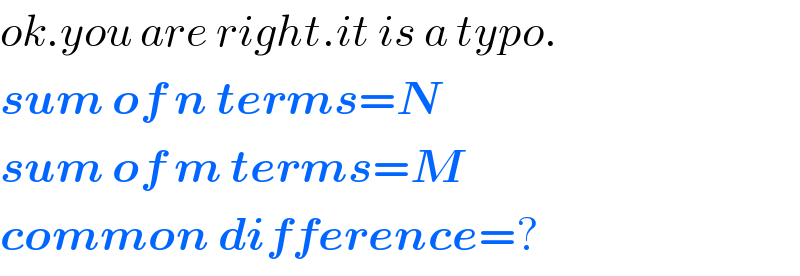
Question and Answers Forum
Question Number 41381 by behi83417@gmail.com last updated on 06/Aug/18

Commented by tanmay.chaudhury50@gmail.com last updated on 06/Aug/18

Commented by behi83417@gmail.com last updated on 06/Aug/18

Commented by $@ty@m last updated on 06/Aug/18

Commented by behi83417@gmail.com last updated on 06/Aug/18

Answered by tanmay.chaudhury50@gmail.com last updated on 06/Aug/18

Answered by tanmay.chaudhury50@gmail.com last updated on 07/Aug/18
![2)N=(n/2)[2a+(n−1)d]] M=(m/2).[2a+(n−1d] 2a+(n−1)d=((2N)/n) 2a+(m−1)d=((2M)/m) (n−1−m+1)d=((2N)/n)−((2M)/m) d=((2((N/n)−(M/m)))/(n−m))](Q41416.png)
